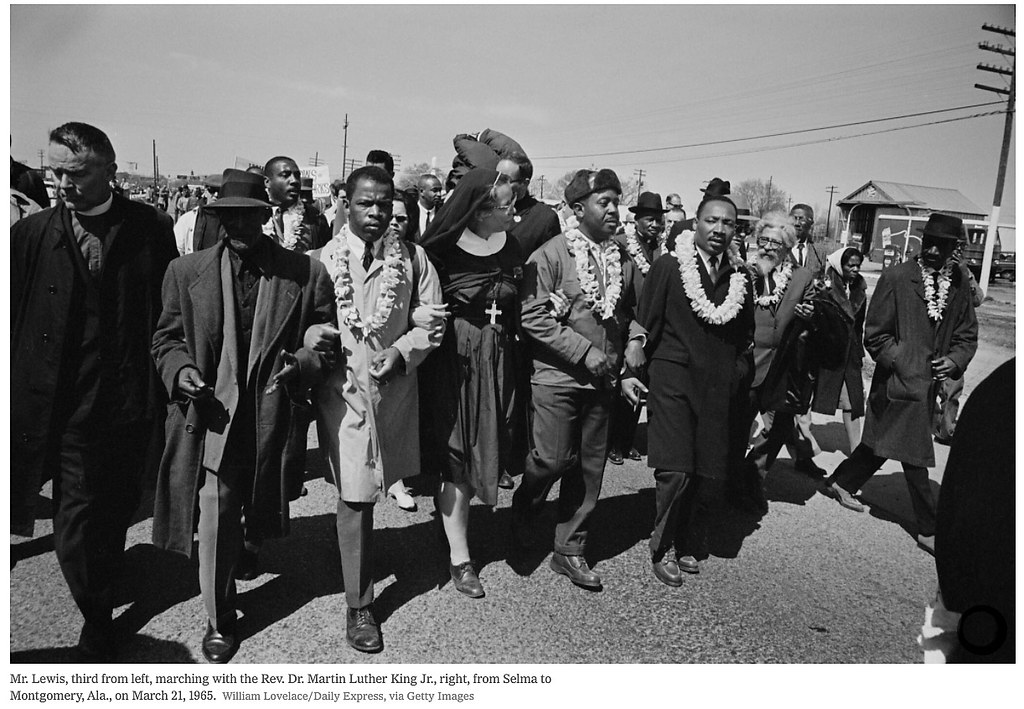
The Voting Rights Act of 1965 (VRA) was signed into law by President Lyndon Johnson on August 6, 1965, outlawing racially discriminatory practices in voting.
Although Black men had been granted the right to vote 95 years earlier, when the Fifteenth Amendment was ratified following the end of the Civil War, discriminatory voting practices persisted in southern states. This discrimination included the adoption and normalization of provisions such as literacy test prerequisites and poll taxes, which effectively suppressed the voting rights—and political power—of Black citizens.
The VRA was passed specifically to enforce the Fifteenth Amendment in the Jim Crow South and protect the right to vote regardless of race or ethnicity, allowing Black and brown communities to fully participate in the political system on an equal basis.
It has been reauthorized multiple times—most recently in 2007—for 25 years.
‘Bloody Sunday’
The VRA, also known as the “legislative crown jewel of the civil rights era,” was a direct outcome of what is remembered as "Bloody Sunday.”
On March 7, 1965—mere months before the legislation was signed into law—600 voting rights activists and supporters attempted to march from Selma, Alabama, to the state capital of Montgomery. The march was organized by the Southern Christian Leadership Conference (SCLC) and the Student Nonviolent Coordinating Committee (SNCC) to draw attention to voter suppression across the South, particularly among the city’s 15,000 Black citizens of voting age (of which only 335 were registered to vote).
Marchers attempted to cross Selma’s Edmund Pettus Bridge when they were attacked by police, state troopers, and a citizen “posse” with tear gas, nightsticks, and whips. Graphic footage of bloodied nonviolent marchers shocked and outraged the nation and galvanized the Civil Rights movement.
Some 25,000 people, led by Dr. Martin Luther King, Jr., traveled to Selma in a show of solidarity and completed the march on March 25, this time accompanied by U.S. troops, the National Guard, and the FBI.
The Voting Rights Act was signed by President Johnson to “right that wrong” of the “outrage of Selma.”
Section 5
Section 5 of the VRA required jurisdictions with a history of racial discrimination to obtain “preclearance,” or federal approval, before changing voting rules to ensure they were not discriminatory.
However, on June 25, 2013, the Supreme Court ruled in Shelby County v. Holder that jurisdictions covered under Section 5 had been determined by a now-outdated formula (detailed in Section 4(b) of the Voting Rights Act) and was, therefore, unconstitutional, rendering preclearance inoperable until (and unless) Congress enacted a new coverage formula, effectively eliminating the use of preclearance.
As a result of that ruling, jurisdictions formerly covered under preclearance unleashed a massive wave of restrictive voting policies that make it harder for people of color to vote.
Section 2
Section 2 of the VRA prohibits racially discriminatory voting procedures and allows people to bring lawsuits against states or localities to repeal existing laws or procedures that suppress their right to vote. After the Shelby County v. Holder decision, voting rights advocates were left to rely on Section 2 as their only means of protection against discriminatory voting laws. However, lawsuits are costly and time-consuming, and while litigation is ongoing, the laws remain in place to affect current and upcoming elections.
The Supreme Court’s 2021 ruling in Brnovich v. Democratic National Committee narrowed the scope of Section 2 claims, thereby making it even more difficult to challenge discriminatory voting laws.
After the ruling, advocates called on Congress to pass the For the People Act and the John Lewis Voting Rights Advancement Act (JLVRAA), complementary pieces of legislation that would make registering to vote and casting a ballot easier, as well as restoring the VRA’s full protections.
In 2025, Representative Terri Sewell (D-AL) once again reintroduced the JLVRAA, to “restore and modernize the protections” of the VRA.
|


